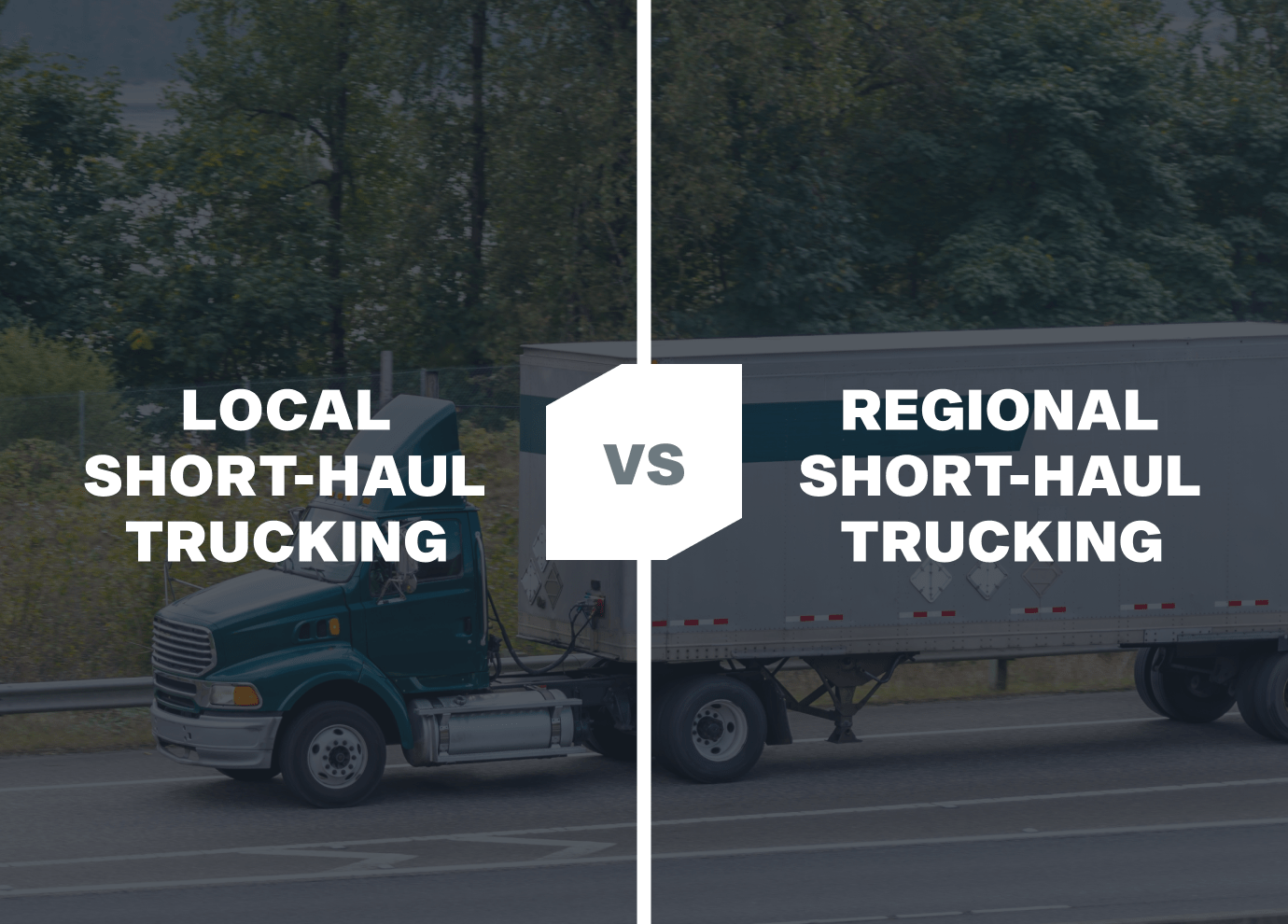
Drivers who have received a certificate a CDL certificate can follow two paths: get a job as a long-distance truck driver or carry out short-distance cargo transportation. The second option, in particular, is the best choice for those specialists who want to spend more time at home with their families. However, the features of this type of employment do not end there. Below, we will look at short-haul trucking in more detail.
Short-Haul Trucking: the Definition
So, what is short haul trucking? In a nutshell, it involves cargo transportation within a radius of 150 miles. Unlike other types of cargo transportation, such as long-haul trucking or OTR trucking, this type of employment, as we mentioned above, allows drivers not to be involved in trips away from home and, thus, spend more time with their loved ones.
Due to the short length of the routes, drivers can make several trips at once per day. Thus, they suffer less from physical and mental disorders and diseases associated with the monotony of work duties.
It is worth noting that the number of working hours of short-haul drivers may not differ from their colleagues who are involved in other types of trucking since their employers usually rely on HOS regulations, which state that these drivers cannot drive a truck for more than 60 hours on the road during a week (after that, they have to spend 34 hours away from work). Because of such restrictions, employers usually try to plan their work schedule to ensure their maximum workload.
Local vs Regional Short-Haul Trucking
Note that short-haul trucking can also be divided into two subtypes: local and regional cargo transportation. Local drivers rarely cover distances of more than 100 miles, while routes for regional ones sometimes reach 250 miles. Despite the relatively small difference in distance, the working schedule of drivers of the first and second groups is usually different.

In particular, drivers performing local cargo transportation usually transport goods within their area. They usually interact with OTR drivers, who deliver the goods to the receiving point to them to the final destination. Sometimes, this type of employment may also involve the transportation of goods with a very short shelf life (for example, food) and, thus, does not require communication and synchronization with their colleagues who travel long distances.
When it comes to regional shipment, it closely resembles the OTR one. This means that often, a short truck driver has to spend the night on the road (particularly when it becomes necessary to travel out of state). Such drivers have more predictable workloads and routes since they do not have to deal with traffic jams which are typical for drivers moving within the city.
Short-Haul vs Long-Haul Tracking: How Do They Differ?
Now, we propose to dive deeper into the comparison of short- and long-haul driving.
- Time spent outside the home. One of the key differences between the two types of employment for commercial truck drivers is the time away from home – short-haul truckers can easily find a job that does not require them to rest outside their residences. In turn, long-haul drivers often have to rest on the road, and these periods can sometimes reach several months.
- Salary level. Given the typically more challenging work conditions of long-distance drivers, they usually have higher salaries compared to their colleagues covering distances within their local area. This is partly due to the pricing of their services since employers often pay the former for each mile traveled, while the latter are usually paid by the hour.
- Specifics of job duties. In many ways, the work responsibilities of long- and short-haul drivers are identical. However, the latter are usually not required to keep logs of hours spent on the road and obtain certificates needed only for specialists transporting heavy loads and driving large vehicles.
- Working conditions. Due to the need to travel long distances, long-haul drivers often experience climate change while traveling from state to state. As for short-haul drivers, their work can be more stressful due to the nature of driving within the city, which is especially true in densely populated ones.
Ultimately, these two types of employment for commercial truck drivers have quite a lot of differences, so it’s definitely not worth focusing solely on the difference in salaries here.
Why Is Short-Haul Trucking in High Demand among Drivers?
In addition to the main advantage of being able to sleep at home most of the working days, short-haul truckers receive several other advantages from this type of employment.
The first is the ability to work in a familiar area. Of course, here, they will have to face some difficulties typical of city traffic: traffic jams, roads closed for repairs and due to accidents, etc. However, over time, they can get to know their area in such detail to choose alternative routes easily, in case of unforeseen circumstances.
Another key benefit is the exclusion of short-haul drivers from most HOS regulations. While long-haul and OTR drivers are required to have electronic logging devices (ELDs) on board their trucks to ensure they do not exceed the number of hours on the road without a break in a 24-hour period and comply with rest time requirements, local and regional drivers are only required to adhere to a certain number of hours of rest per week (at least 34). This gives them greater flexibility in deciding how to plan their work schedules.
How Much Do Short-Haul Truckers Can Earn?
According to ZipRecruiter, at the time of this writing, the average short haul truck driver salary in the United States is about $34 per hour. And yes, usually, the salaries of such drivers are calculated based on hourly rates, unlike other types of employment of commercial truck drivers; although ultimately, it all depends on the specific employer.

Is Short-Haul Trucking a Good Type of Employment?
Due to the fairly large difference in the average salaries of long- and short-haul drivers, the second type of employment is usually chosen by those specialists who do not want to leave their area for a long time, so as not to face burnout or problems in the family. By the way, you can learn more about possible challenges and problems faced by truck drivers in the article below.
Final Thoughts
Short haul trucking has both advantages and disadvantages, so the key to understanding whether this type of employment is right for you is a detailed analysis of its features. In particular, you can check our blog to find a lot of useful information about the trucking industry – both for business owners and for drivers themselves.









